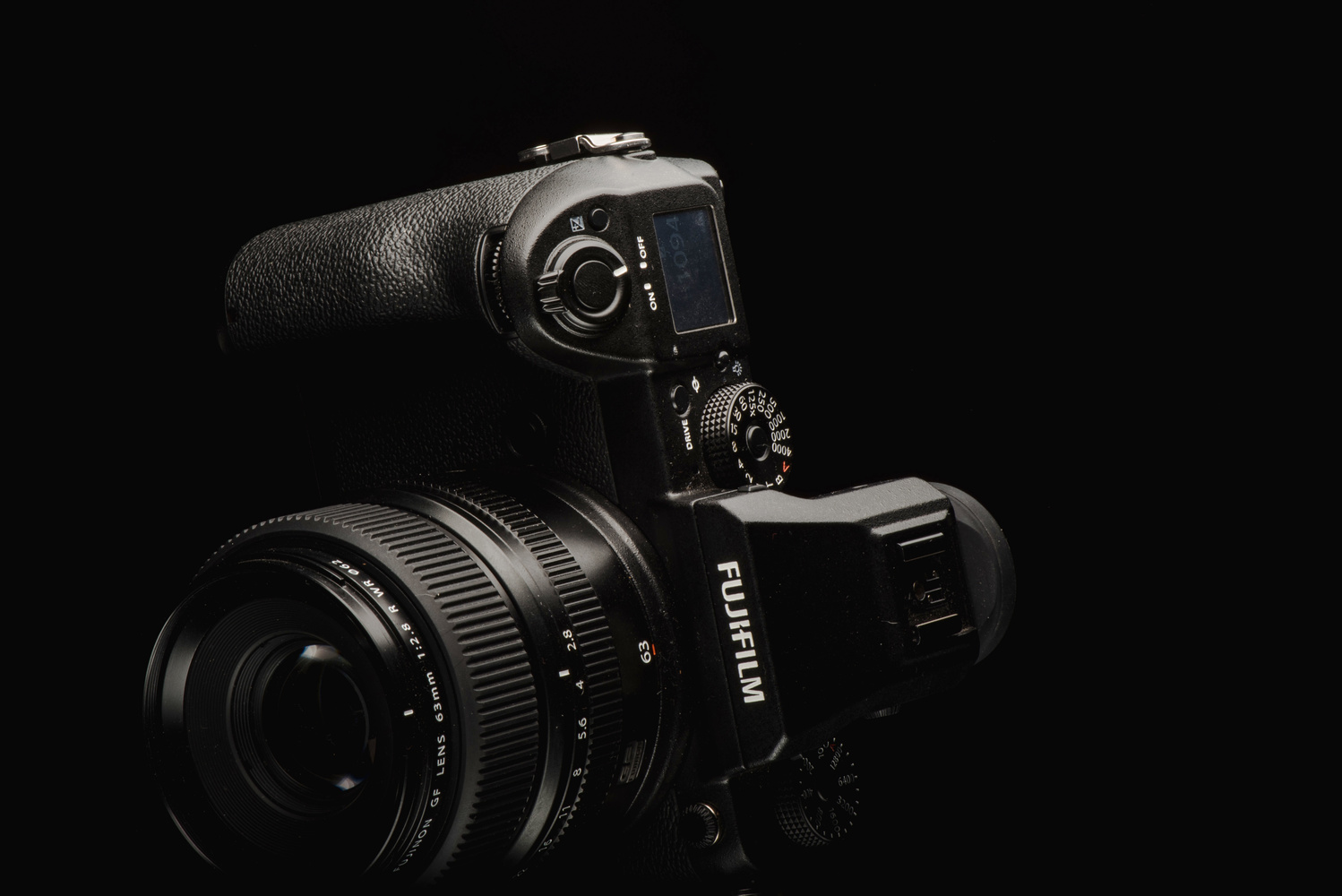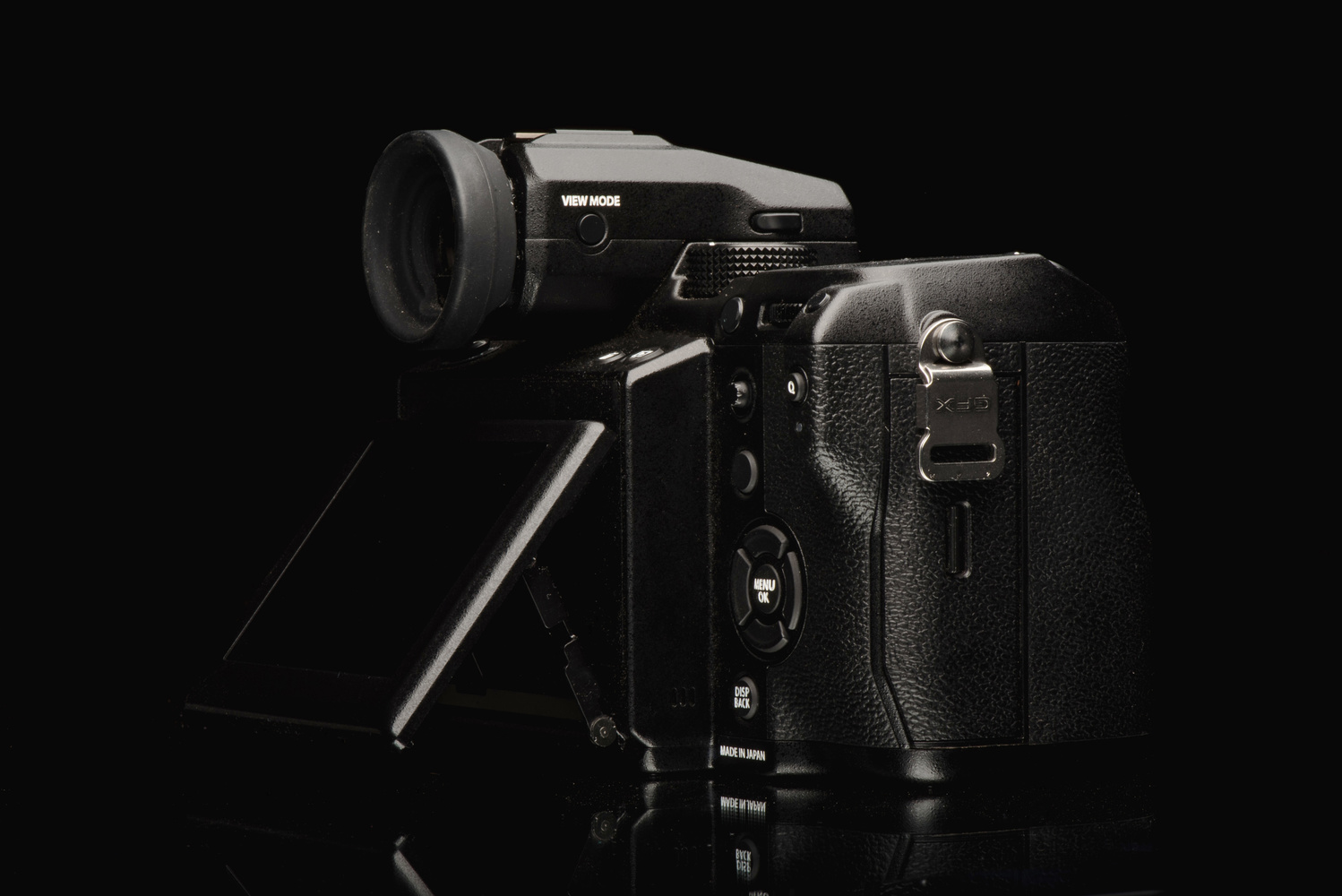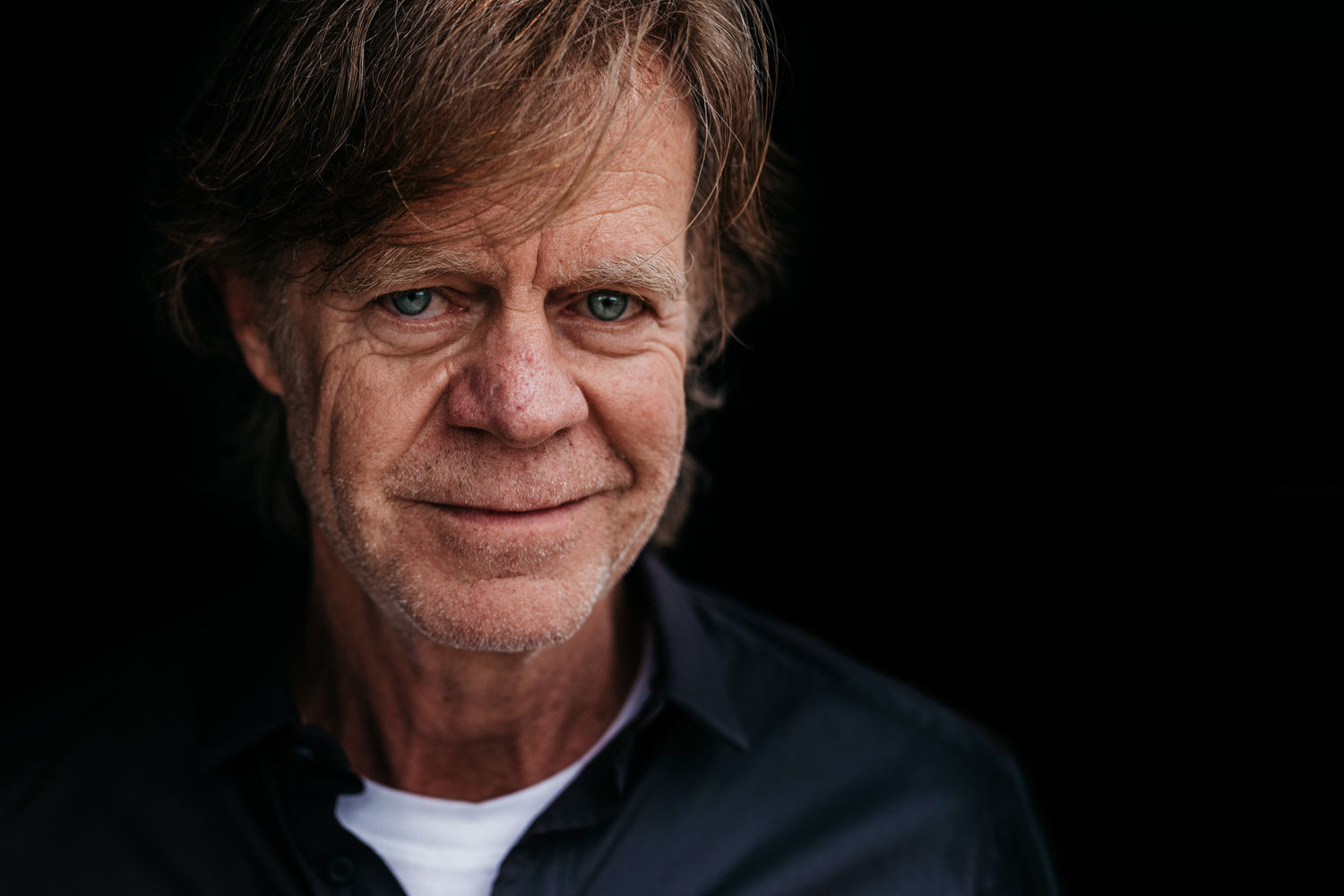Fujifilm has made quite the name for themselves in the camera industry. They completely changed the game with the release of the original X100 and have since been turning out great camera after great camera. In a similar fashion, Fujifilm is looking to change the way you view medium format cameras with the recent release of the Fujifilm GFX 50s. This camera is not only smaller and lighter than most comparable cameras, but it also comes in at a cheaper price tag. But does the final product live up to the hype?
To start this review off, let's talk price. The camera alone without a lens comes in at just under $6,500. Bring in the 63mm prime and that will add another $1,500. Lenses like the 32-64mm will run you $2,300. Want another battery? That will add $120. So by no means is this camera cheap. But, compare all of this to any Hasselblad camera and things start to look a lot more reasonable. Compare the price to a Nikon D5 and now we are playing in the same court.

The first thing I noticed when taking the camera out of the box and getting everything setup was just how small and light it is. When I think medium format, I think big and chunky. But in reality, this camera is about the same exact size and weight as my Nikon D750 (and the D750 is already pretty small in terms of full frame cameras). Comparing it to its little brother the X-T2 and the size increase is more than acceptable given the difference in sensor size.

Nikon D750 left - Fujifil GFX center - Fujifilm X-T2 right
On the top of the camera, you will find the traditional shutter speed and ISO dials that appear on the X-T2 along with an awesome E-Ink display that is always on very easy to read. One thing I wish was possible with this always on display is the ability to change what is displayed. The current setup is when the camera is off, it shows the battery level and the number of available frames left on the card. When the camera is on, it shows shooting details like shutter speed, aperture, ISO, white balance, etc. But because most of this information is easily seen by glancing at the dials on the camera, the majority of this information is almost useless. Instead, I think it would be more useful to be able to customize what information the user would like to see when the camera is on or off. Another option would be to remove the screen altogether. The screen is super nice for a display screen, but removing it would make room for the missing exposure compensation dial that most X-series cameras have.

Coming around to the back of the camera, you have an amazing tilting touch screen along with 10 programmable buttons. The options for these programmable buttons is also fairly vast. Things like toggling on and off a live histogram or electronic level come in handy, while other options such as playback and grain effect seem pretty useless. But overall the entire handling of the camera is pretty seamless and enjoyable. It also sits very well in the hand and offers an extremely sturdy feeling grip.

Another great thing about the setup of the camera is that there are no compartments on the bottom of the camera. Things like the battery compartment and SD card slots are all located on the sides of the camera. This makes it so that long days of shooting on a tripod don't require you to remove the camera in order to replace a battery or card. The camera also features dual SD card slots so you can either have a ton of file space (and at 50+ megapixels you may need it) or you can shoot so that a file is written to both cards at the same time giving you an instant backup. In addition, the top eye piece is fully removable. This allows you to add things like the swivel adaptor or even shoot without it if you plan to strictly use the screen and want a smaller package. The interface where the viewfinder attaches also leaves the door open for future accessories (fingers crossed for a waist level viewfinder).


Moving along to actually using the camera, the first thing I wanted to know was just how fast the autofocus was. I wanted to know if I could use this to shoot a wedding or other types of documentary work. Sadly, the answer is no. But don't let that deter you just yet. While the focus is not fast enough for me, it may be fast enough for you. I say this because if I had to compare the focus speed to another camera, I would pick the original Fujifilm X100. And this makes sense since both cameras are limited by only having contrast detect autofocus points. So while this camera doesn't focus fast enough for me, tons of photographers were got along just fine with the autofocus speeds on the X100. But for me, focusing on a subject moving toward or away from the camera was almost impossible. The continuous AF is almost useless and you would probably have a better hit rate by focusing on a specific spot and trying to catch a subject as they walk through that area. But one thing to keep in mind is that we are still talking medium format. So put this camera head to head with other medium format cameras and things look a lot better. While the camera has to rack back and forth each time you focus in order to lock in, it still manages to do this fairly fast. The thing with contrast detect AF though, as that as the lights start to dim, the AF starts to struggle more and more.

With the AF limitations in mind, I can still use it to shoot a good chunk of a wedding day. While it couldn't keep up to take images of the fast paced parts of the day, it did more than adequate for things like hair and makeup, groom prep, and the ceremony. It also does pretty well when it comes to portraits. Like “oh my gosh if I’m taking a portrait then I’m using this camera” type of good. It’s amazing.

I really only have two gripes when it comes to shooting portraits with this camera. The first one is that it has a flash sync speed of 1/125th of a second. I get it, the sensor is huge so the shutter can’t move fast enough to get anything faster. It makes sense, but I still don't like it. The second is that the silent shutter majorly suffers from rolling shutter causing slight movement from the camera or from a subject to be very noticeable.

Rolling shutter produced by minor camera movement
The last thing I want to talk about is one of my favorite things about the camera. The dynamic range. Holy wow is this thing amazing. Not only does it have amazing shadow recovery, but it also has almost just as much highlight recovery. To show you what I’m talking about, the below set of images were shot at +3, 0, and -5EV.

Adjusting the exposure slider in LIghtroom, you can see that it’s possible to recover the +3EV image as well as the -5EV image. You can see a small patch of highlights in the clouds for the overexposed image that was not able to be recovered. There is also a slight color shift in the sky between each image. But given the extreme exposure adjustment on each image, this is more than acceptable. Also, zooming in you can see that the grain caused by these exposure shifts is very minimal.


What I Like
- Small and lightweight body
- Affordable when compared to other medium format cameras or high-end DSLRs
- Dynamic range
What I Don't Like
- AF is fast but could be better
- Slow flash sync speeds
- Silent shutter is almost useless
Conclusion
When I first got this camera I thought there was no way I would want to keep it. It’s more megapixels than I need or want, it’s not fast enough to replace other cameras I have in my bag, and using flash outside of a studio is difficult at best. With all this in mind, I love this camera. Time and time again I find myself reaching for the GFX over other cameras in my bag. I have also created some of my favorite images to date using this camera. Does it have its faults and room for improvement? Absolutely. But one of the great things about buying into a Fuji system is that you may not have to wait for the next model to be released to see these improvements. So if you shoot a lot of portraits and want a medium format camera that isn't a pain to carry around, then the GFX should be at the top of your list.


















The 1/125th is a non-issue if you use HSS capable flashes and triggers, which are now starting to come out
I think for portraits it is close to being less of an issue, and since he mentioned portraits as the main gripe I tend to agree here.
That said HSS is an inferior solution for any shooting situation that is outdoors or large subject/strobe distance as the power is severely diminished. So unless there is a Hypersync/hi sync solution or leaf shutter lenses for this camera it appears to be fairly limited to using strobes in those scenarios.
It's definitely a major issue. HSS has huge limitations on power, and requires specific pack/head systems. The power limitations then lead to modifier limitations and distance limitations.
Really interesting review. I played with one in a store and it felt special, and while I love my 645Z, I caught that "what if?" bug. If the AF acts like you say, then I think the Pentax is right for me: It's not a sports camera, but the AF works relatively well for me in normal light. I've also just fallen madly in love with the Pentax files, so wanting to switch systems now is just the rabid consumer in me. Still, the Fuji looks like a blast.
Dunno how it fares in real life usage, but at least on dpreview's studio scene this camera is not that much better than a full frume, resolution-wise.
For me, resolving power is only part of the point. In my experience, the Pentax ranges from soft to eye-shredding, depending on the glass and your technique. It's the combination of resolution, perspective, virtually invincible files and intangibles (does the "feel" of the camera inspire you when shooting?) that makes it worth it to me. It's not objectively "different" it's just "more." YMMV, it's not for everyone/doesn't make you a better photographer, etc etc.
not just the resolution, colors too... add the X1D then you will see what i am talking about !!, MF is Not for the big sensor or resolution. it suppose to be for the tonal range, accuracy of color, skin tone !, which nobody cares about anymore. There is nothing this camera can do that D810 can't. D810 and Otus and forget about anything else. X1D is different. Even Phase IMO cant beat Hasselblad in color renditions.
Resolution wouldn't really change, would it? Its resolving the same mp as the 5dsr. Medium format isn't about sharpness (shoot, no change in format is going to be about sharpness!), but about dynamic range, color tonality, and sometimes dof fall-off (not the same thing as shallow dof).
The fact there's no tethering to Capture One takes this out of consideration for many photographers. I've been a Fuji shooter for 2 years (XPO1, XT1, XT2, And Various film cameras) and I love everything fuji has done recently but this is a major flaw IMO. I do the agree the price point is great, especially for entering medium format but 6.5 is still a good chunk of change. I waited, and waited, and waited for Fuji to answer the tethering issues which forced me to purchase an entire other system just for studio work. As a portrait & food photographer, I often work with a team and tethering is a must. So either Capture One tethering or Fuji building a RELIABLE tethering option. Until then, I can't even consider this system and this coming from a PROUD fuji XT2 owner.
Agree completely. No capture one support (which will never come) means I'd have to go back to the shit that is Lightroom. No thanks.
Exactly!
Just to clarify, you can customize the E-Ink display on top to display what you want when the camera is on.
Ah I must have totally skipped that page in the manual. Thanks for the correction!
Thanks for the review, beautiful photos.